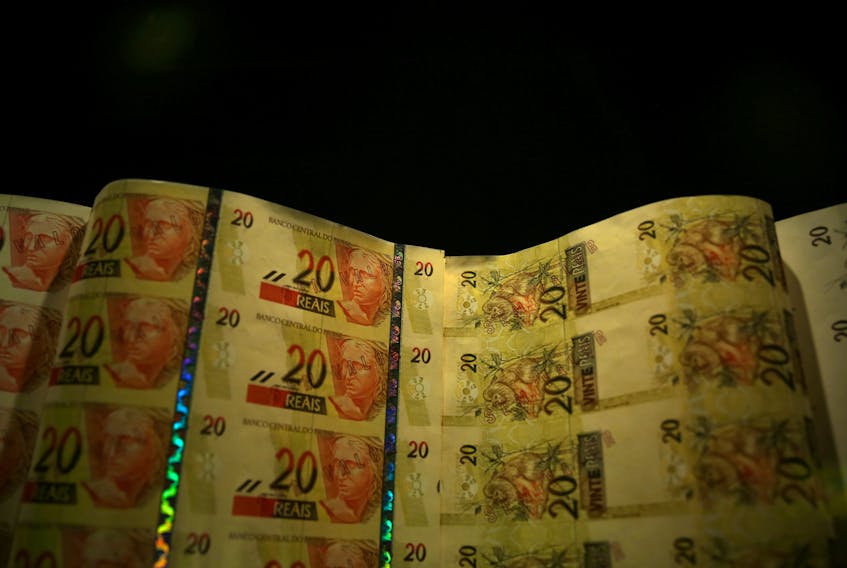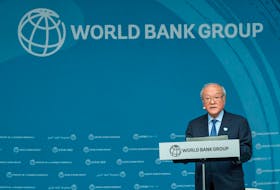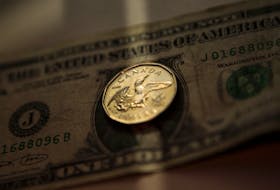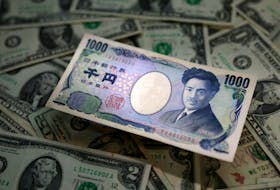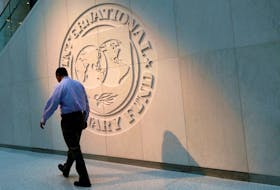By Gabriel Burin
BUENOS AIRES (Reuters) - Brazil's real will trade not far off record lows into the new year, receiving eventual support from a tentative economic recovery after months of unconvincing macro performance that has dragged the currency down, a Reuters poll showed.
The real
Brazil's currency fell to a record low of 4.26 against the U.S. dollar in late November and is trading not far above that rate now. Economists in the survey pegged it at 4.195 per dollar in one month and 4.10 in three months.
"Our models still suggest a fair value for the BRL around 4.00/4.10," said Flavio Serrano, chief economist at Haitong Brasil. "Faster growth should boost investment", he added, which would aid the battered currency "somewhat."
The real rose slightly this week following the announcement of the strongest quarterly gross domestic product (GDP) growth since early last year, driven by a solid performance in agriculture and a sharp rebound in industry.
However, an overall slow economy has hurt the currency as President Jair Bolsonaro's reforms, focused on macroeconomic goals, have so far failed to materialize big capital spending plans, notably in the oil sector.
Tensions over welfare spending cuts and the environment have also weighed. Still, Latin America's top economy looks safe from the ructions that are rippling through other markets in the region.
Policy easing to boost growth has been another source of foreign exchange weakness. Brazil's central bank stands ready to lower its interest rate by another 50 basis points to a fresh record low of 4.50%, its president said this week.
The currency has lost almost 8% in 2019 and is set to close its 8th year in the red since the decade started, a persistent depreciation that aroused U.S. President Donald Trump's anger this week.
MEXICO PESO STABLE FOR NOW
With protectionist worries centered in other places for the time being, the survey reflected a relatively stable prospect for the Mexican peso
Lately it has been falling slowly toward 20 per dollar after two months of gains in September-October, amid growing caution about the chances of ratifying a continental trade deal this year due to resistance by some U.S. Democrats.
And, as in Brazil, lower "carry trade" rate differentials are a factor too. "The peso will maintain a weak performance mainly due to erosion of carry and volatility associated with external premiums," Banorte wrote in a report this week.
In line with many emerging market countries, Mexico's central bank is leaving the door open to future rate cuts, resulting from weaker than anticipated economic activity and cooling inflation.
But contrary to the pesos of Argentina, Chile, and Colombia, Mexico's currency is finishing 2019 basically at the same level where it started, the 4th year in a row it will close near 20 per dollar despite some episodes of volatility.
A similar narrative could have applied for Chile's currency, but an outbreak of mass protests in October changed everything and now the peso
As Chile descended into chaos, Argentina was enacting strict capital controls to avoid further international reserve losses over political fears. In practice, these emergency steps froze the interbank value of the peso, halting months of depreciation.
Estimates for the currency showed an unusually calm trajectory at the start of 2020. The peso has also kept its composure in parallel markets, where it could be more reactive once a newly-elected Peronist government announces its plans.
(Reporting and polling by Gabriel Burin; additional polling by Miguel Ángel Gutiérrez in Mexico City, Sujith Pai in Bengaluru; Editing by Ross Finley and Nick Zieminski)

